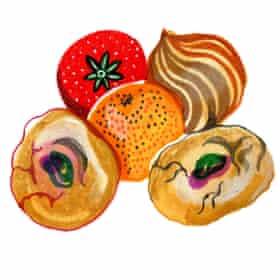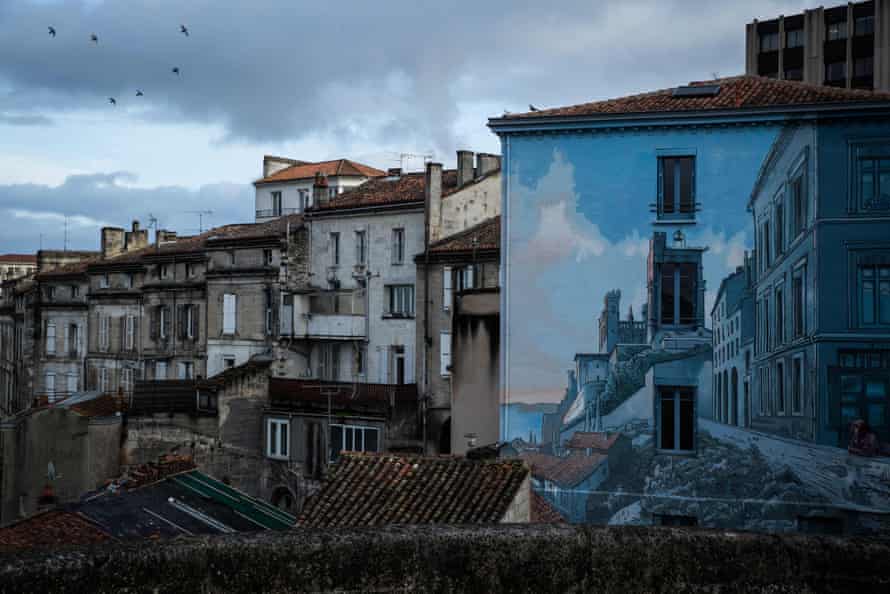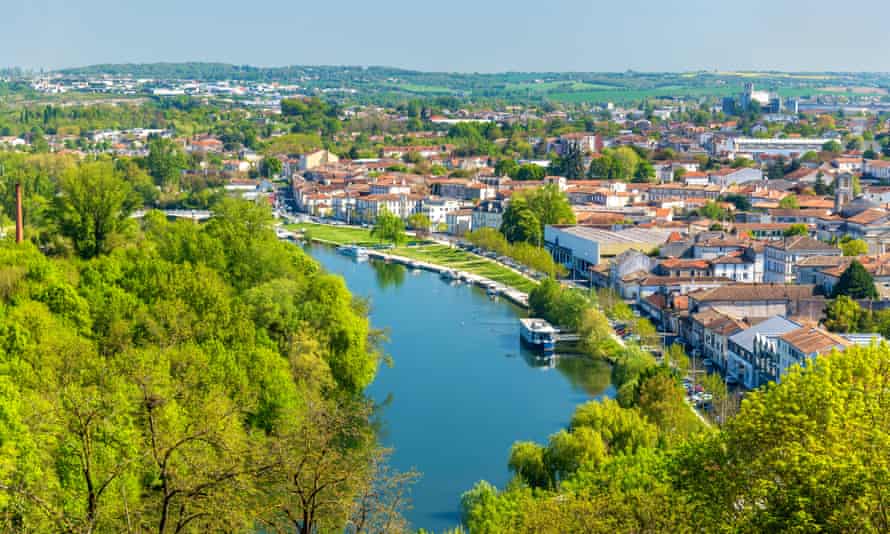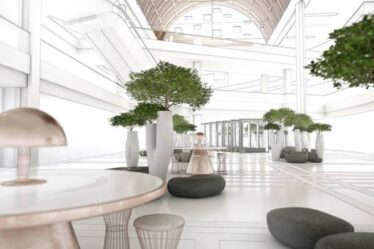
Images and Article from www.theguardian.com.
Food
The culinary heart of Angoulême (which is about 120km north-east of Bordeaux in western France) is the grand 19th-century Marché des Halles, a covered market showcasing regional produce – cheese, foie gras, organic vegetables, shellfish – with streetfood-style diners offering seafood platters, duck magret, artisan pâté and sausages. It has come back to life over recent years and everyone meets up here at the weekend.
The hottest new restaurant is Le Lion Rouge, in a former ironmongers – an art deco building with a plant-filled glass atrium. Run by a former photographer, it does Italian cuisine and has the best pizzas in town.
For creative bistronomique interpretations of Charentais cuisine, check out Le St André. And two historic specialist boutiques not to miss are Biscuiterie Lolmède, which makes to-die-for macarons, while chocoholics will love the comic book creations at Chocolaterie Duceau.
Inspiration

This is France’s Ville de l’Image, capital of comic books, with studios and universities dedicated to what we call the Ninth Art – there’s even a festival for comic arts (17-20 March this year). You can study and produce manga and video games here, film studios produce blockbusters like Wes Anderson’s The French Dispatch, and it’s all symbolised by more than 30 giant cartoon murals across the city.
I tell friends to download the murals app and discover them on foot; my favourite is Mémoires du XXe Ciel, by Yslaire. It inspired me to make a documentary with local children, persuading them to look up at these murals rather than take selfies.
Neighbourhood
The neighbourhood where everything happens is high up. It’s known as Le Plateau, a maze of medieval cobbled streets and squares, lined with bars, boutiques and bistros. I love to walk along the ancient, tree-lined ramparts that encircle the city; the views stretch for miles across valleys and forests, and burst into colour at sunset. Right by the ramparts stands Saint Pierre cathedral, a monumental Romanesque building with a surprising secret: contemporary artist Jean-Michel Othoniel has created an extraordinary installation using coloured Murano glass from Venice. It’s not open all the time, so be sure to book .
Green space

A wonderful walk along the bank of the Charente follows an old towpath from Port de l’Houmeau, once the industrial hub of the city. The waterside promenade offers the perfect view up to Angoulême, atop a high rock.
The riverside, a long-forgotten part of the city, is coming back to life. It is the location for university campuses and museums such as the Musée du Papier, retelling Angoulême’s 500-year history of paper production (including Rizla cigarette papers). Rent a bike, preferably electric, as climbs are steep here, and continue to what is known as La Coulée Verte to explore countryside, vineyards and medieval villages.
Nightlife
Sign up to our Inside Saturday newsletter for an exclusive behind the scenes look at the making of the magazine’s biggest features, as well as a curated list of our weekly highlights.
Clubs may be few, but Angoulême is a favourite venue for festivals, with the city becoming one big party at events throughout the year. They range from the film festival to Musiques Métisses, foodie Gastronomades and Rempart’s Rally, celebrating a time when Angoulême’s Formula One circuit rivalled Monaco’s.
From spring to autumn, cafes lining the esplanade surrounding Les Halles, such as Le Chat Noir and Blues Rock Café, teem with students. Tucked down a quieter backstreet, Café Chaud and Café Bulle are my favourites for a glass of local wine or a late-night cognac. Throughout the year there’s live jazz, electro and rock concerts at Le Point Carré, a friendly community-run bar.
Stay
Known to locals as the Hôtel de France, the Mercure Angoulême (doubles from €130 room-only) is in an imposing 17th-century mansion with lush gardens, right opposite the market.
Isabelle Fougère is an author, film- and documentary-maker who grew up in Angoulême and moved back after 30 years in Paris and travelling the world
Article shared from www.theguardian.com



